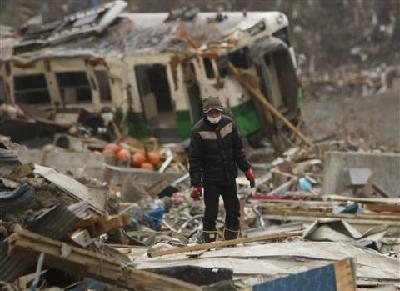
This is the VOA Special English Technology Report.
A powerful earthquake struck the northeastern coast of Japan at 2:46 p.m. local time on March 11th. Japan's Meteorological Agency released its first tsunami warnings just three minutes later. The country has one of the best earthquake early warning systems in the world.
There are more than 4,000 Seismic Intensity Meters in place throughout Japan to measure earthquake activity. These meters provide information within two minutes of an earthquake happening. Information about the strength and the center of the earthquake can be learned within three minutes.
There are also concrete sea walls around much of the Japanese coastline. But these measures proved no match for the powerful earthquake and tsunami.
Costas Synolakis is a tsunami expert with the Department of Civil and Environmental Engineering at the University of Southern California in Los Angeles.
COSTAS SYNOLAKIS: "Japan is one of those most well-prepared countries on earth in terms of tsunami warning. They had a warning. I think what went wrong is that they had not anticipated the size of this event."
He says there are two reasons for this. Japan has not had any event anywhere near as big as this one in the last 150 years. And scientists had not expected such a large earthquake happening off the coast of Japan.
The 9.0 magnitude earthquake was the 4th most powerful earthquake ever recorded worldwide. It was also the worst earthquake ever to hit Japan. The tsunami waves that followed were reported to have reached as high as 13 meters in some areas.
Costas Synolakis says Japan's concrete sea walls were not built to handle such high waves.
COSTAS SYNOLAKIS: "The concrete seawalls in many places in Japan are about ten meters, that's about 33 feet. In Sendai, they were about three meters, that's about ten feet. So that shows you that at least in that area they were not expecting such a sizeable wave because they would have built a higher seawall."
A tsunami wave can travel as fast as 800 kilometers per hour. To get to higher ground people would often have to travel for many kilometers. This can take more time than a fast traveling tsunami will permit. This is especially true in cases like Japan, where the center of the earthquake struck so close to the coastline. The tsunami waves followed almost immediately.
Experts say early warning systems will continue to be limited by these facts until earthquakes and tsunamis can be predicted.
And that's the VOA Special English Technology Report, written by June Simms. You can find more news about the disaster in Japan at our website, voaspecialenglish.com. You can also find transcripts, MP3s and podcasts of our reports. And you can find us on Facebook and YouTube at VOA Learning English. I'm Steve Ember.
Workers continue efforts to prevent a nuclear disaster in Japan
Many residents from Japan flee to US
Tsunami warnings issued in Pacific From Japan to Peru
Tsunami memories go back to 1933
(来源:VOA 编辑:崔旭燕)
